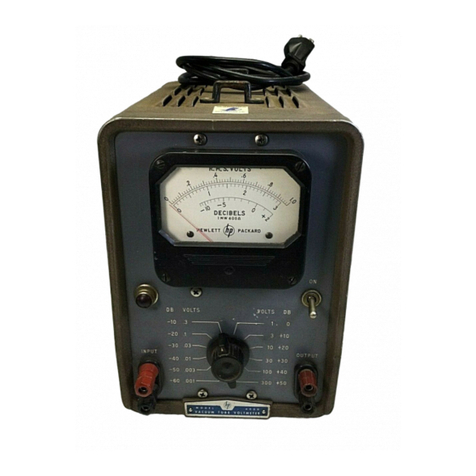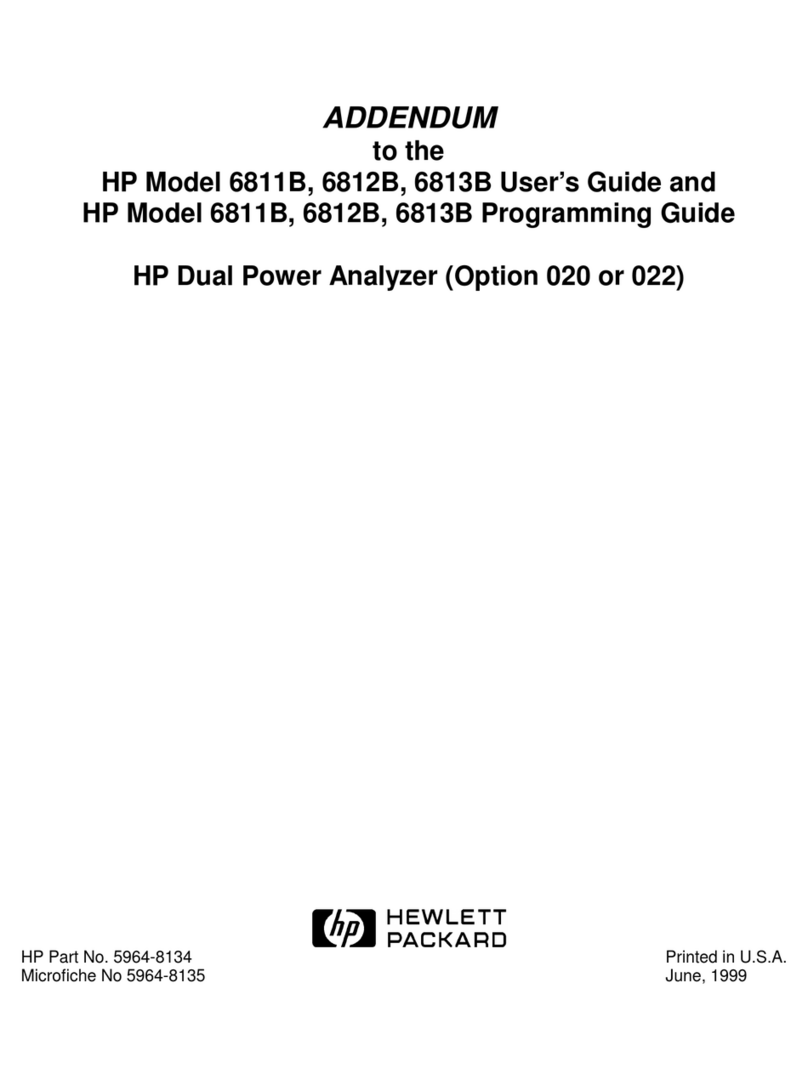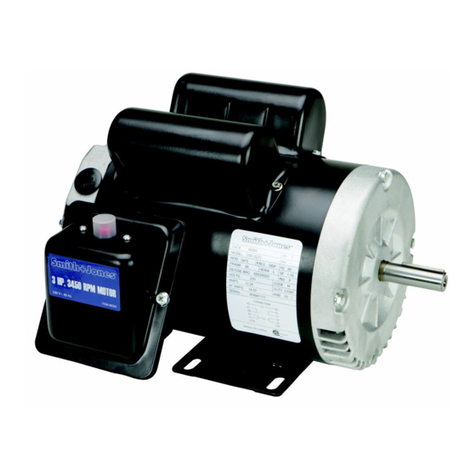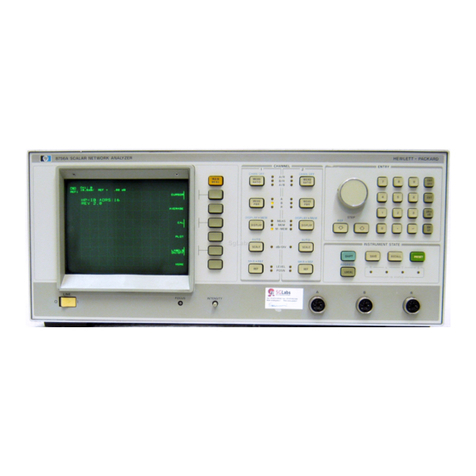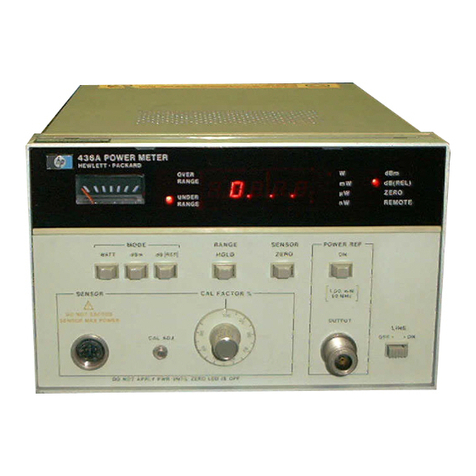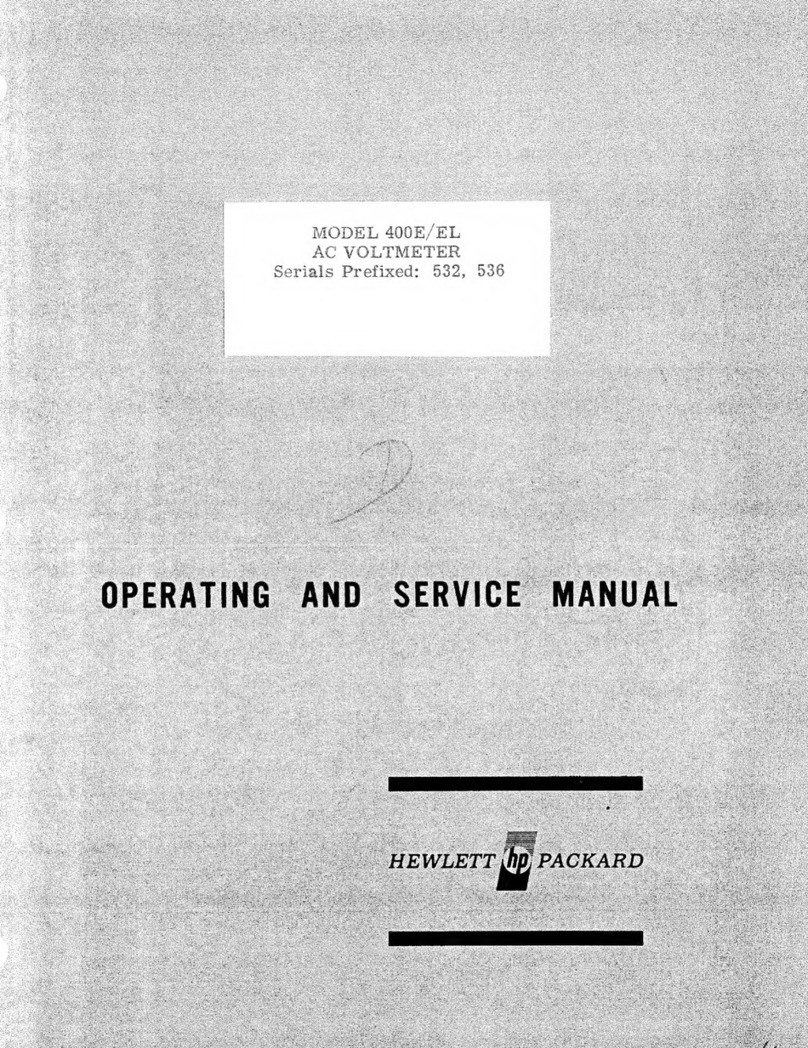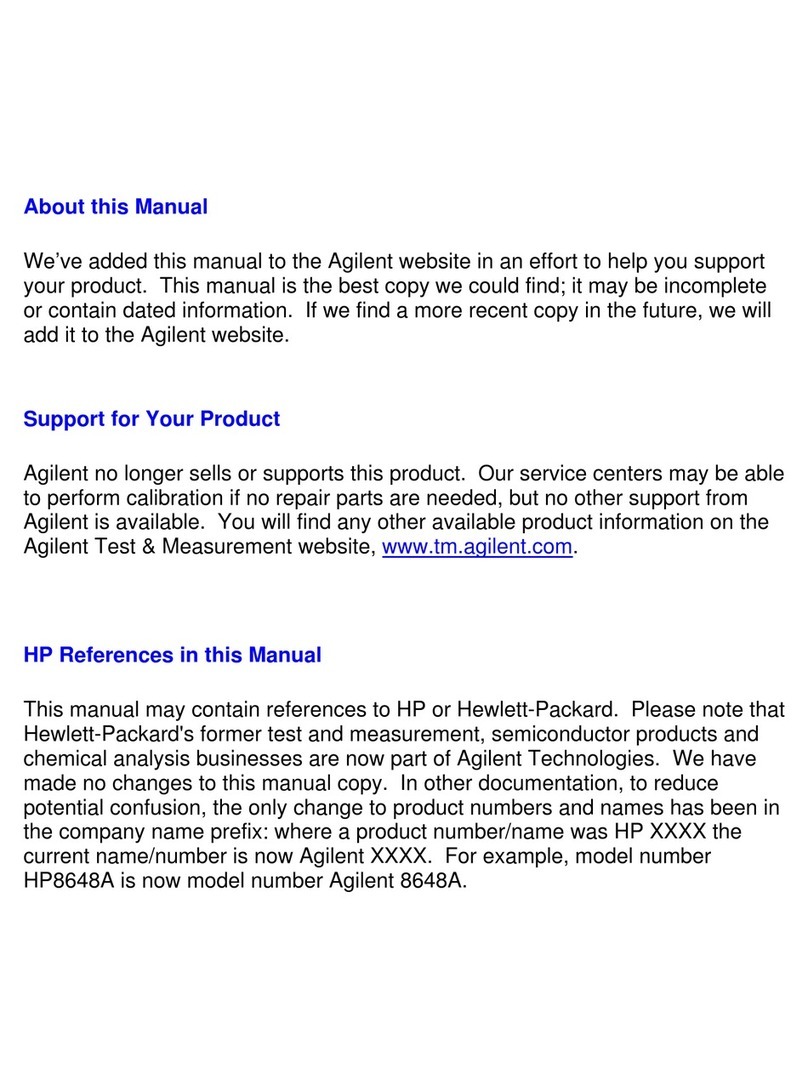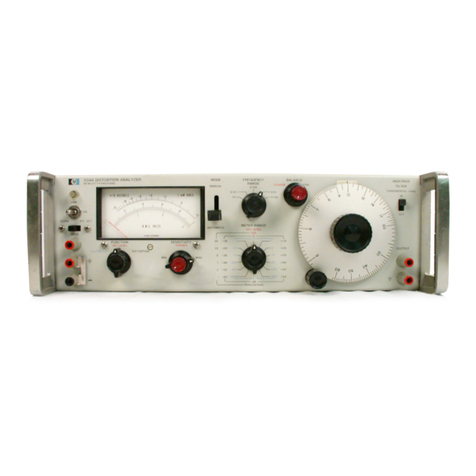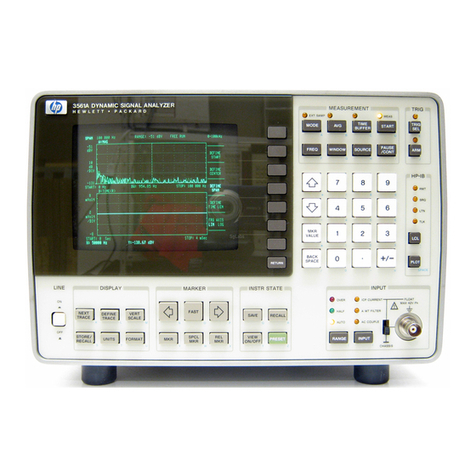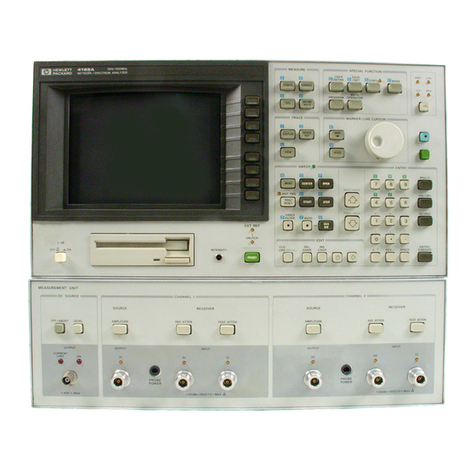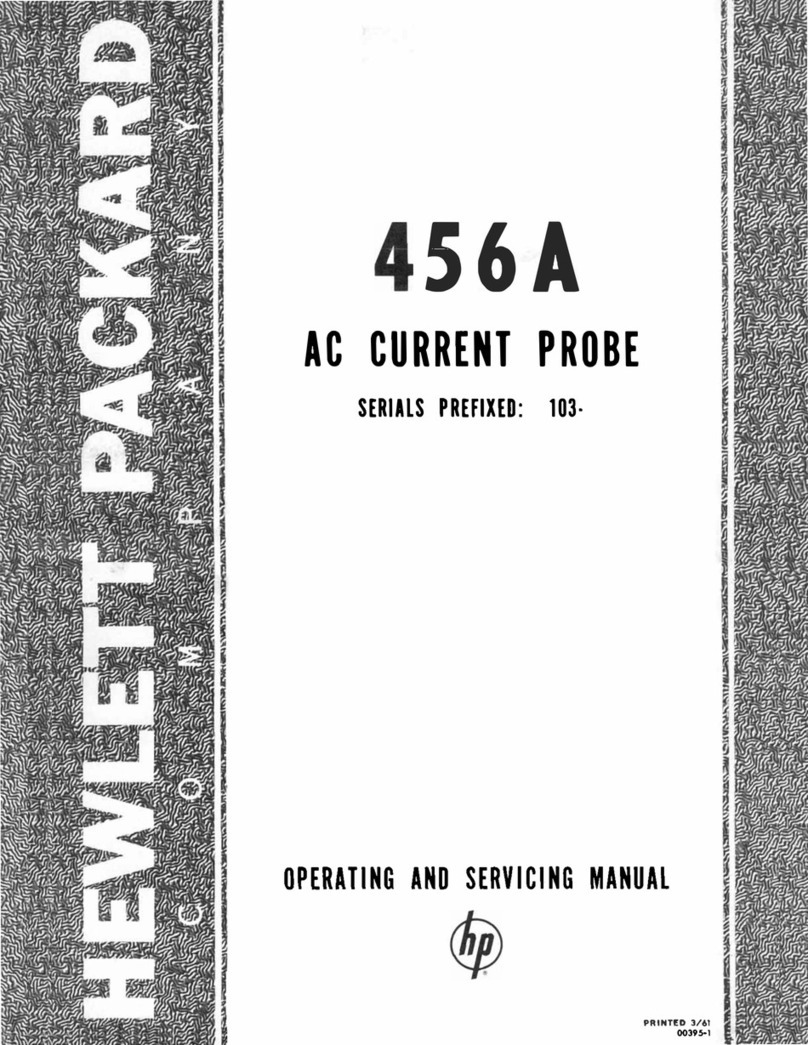
Page 2
Introduction
The Hewlett-Packard 8690B Sweep Oscillator forms the
basis of many types
of
swept-frequency systems. The 8690B
Sweep Oscillator accepts nine RF units capable
of
cover-
ing the frequency range from 0.4 MHz to 40 GHz. An
8690B/RF Unit may be used alone or with a wide variety
of
accessory equipment. For example, multi-band sequen-
tially swept coverage
is
provided
by
employing the
HP
8706A Control Unit and up to three 8707A RF Unit Hold-
ers, permitting the 8690B Mainframe to drive
as
many
as
eight RF unit sweep oscillators.
86908
Sweep
Oscillator
The Hewlett-Packard 8690B Sweep Oscillator combines
interchangeable RF units with high accuracy, versatility, and
ease
of
operation to bring you all the advantages
of
single
unit sweep oscillators plus economical multi-band capability.
With
no adjustments required, the changing
of
RF units
is quick and
easy
and the snap-in dial
is
keyed for accurate
positioning. The front panel has a logical, straightforward
layout for ease
of
operation. The frequency dial
is
the full
width
of
the instrument for maximum resolution.
Careful design
of
all-new solid-state power supplies re-
sults in exceptionally low residual FM, and provides rugged
protection against system transients.
INC.
FM
=
750kHz
j_
250
kHz
T
Fi9ure
1.
Low incidental FM
of
square-wave modulated
8693B is shown in this oscillogram. Measurement made
with
HP
2590B Microwave Frequency Converter.
RF
Units
The
HP
8698B (400 kHz -110
MHz)
and 8699B (1
oo
MHz - 4
GHz)
Solid-State RF Units provide four decades
of frequency coverage with only two plug-ins.
By
use
of
heterodyne techniques, careful filtering, and advanced mi-
crocircuit technology, broadband coverage
is
achieved along
with superior performance.
Microwave RF units employ high reliability Backward
Wave Oscillator tubes
(BWO)
which carry an uncondi-
tional one-year warranty.
Two types
of
microwave RF units are available, permit-
ting selection
to
meet any application requirement.
HP
PIN
diode modulation and leveling are available in the
Model8690B
"B" type RF units from 1 to 12.4 GHz. The 8691-4B RF
Units offer exceptional frequency accuracy (between 0.5%
and
1%)
over a wide range of modulation conditions.
HP
PIN
diode RF units are the only RF units that specify full
power frequency accuracy over a 10-dB dynamic range,
considerably enhancing measurement accuracy. All modula-
tion functions including leveling are performed independent
of
the backward-wave oscillator tube
(BWO).
The result
is
the virtual elimination
of
frequency pulling during either
modulation or leveling, which, in turn, results in extremely
high frequency accuracy and linearity and very low inci-
dental FM. Figure 1 illustrates the low incidental FM
associated with square-wave AM.
The
"A"
series
of
RF units employs conventional
BWO
grid modulation for AM functions. This series covers the
entire 1-40
GHz
spectrum in seven models (8691A-8697A)
and
is
used in the bands above 12.4 GHz, where
PIN
attenu-
ators are not available, and in lower bands when modulation
requirements are
less
demanding.
Sweep
Functions
and
Markers
The 8690B Sweep Oscillators provide a broadband "start-
stop" sweep whose end points can be set anywhere in the
band. Independent controls set the start and stop frequencies
on the slide-rule scale. Thus the units can sweep up or down,
depending only on the setting of the start frequency with
respect to the stop frequency. There
is
no interaction
be-
tween the start and stop control settings. Selecting the start-
stop sweep
is
simply a matter
of
pushing a button.
Two independent frequency markers, set separately on
the dial and direct-reading in GHz, can be positioned
any-
where in the band. The markers amplitude-modulate the
RF output, providing triangular markers. These markers
have points sharp enough to give high resolution on narrow
sweeps, yet are broad enough
to
be quite visible on even the
broadest sweeps. Figure 2A shows that the markers are
plainly visible on a full-band sweep. In addition, marker
amplitude can be adjusted from the front panel. Adding
the markers to the display
is
again a matter
of
pushing
buttons.
The markers can also be used
as
end points for a second
broadband sweep which starts at the Marker 1 frequency
and ends at the Marker 2 frequency. Thus, the 8690B
Sweep Oscillators have two independently adjustable broad-
band sweeps, providing a high degree
of
flexibility. For
example, should the start-stop sweep reveal a particular area
of
interest, the markers can be adjusted to bracket the area;
then a simple depression of the Marker Sweep button
ex-
pands the bracketed area to cover the full horizontal scale
of
the indicating device-oscilloscope or X-Y recorder.
Figure
2B
illustrates this display expansion. The marker
sweep need not
be
within the start-stop sweep. Thus the
start-stop sweep can be set to cover one range, such
as
the
passband
of
a filter, and the marker sweep can be set to
cover another range, such
as
the stop band.
Besides sweeping from a start frequency to a stop fre-
quency, the 8690's provide a calibrated narrow-band sweep
which
is
symmetrical about a center frequency. Simply
press the
.!lF
button, set the center frequency with the Start-
CW
control, and adjust the deviation with the
Stop-LlF
control. Total swing
is
indicated on the bottom slide-rule
)
)












